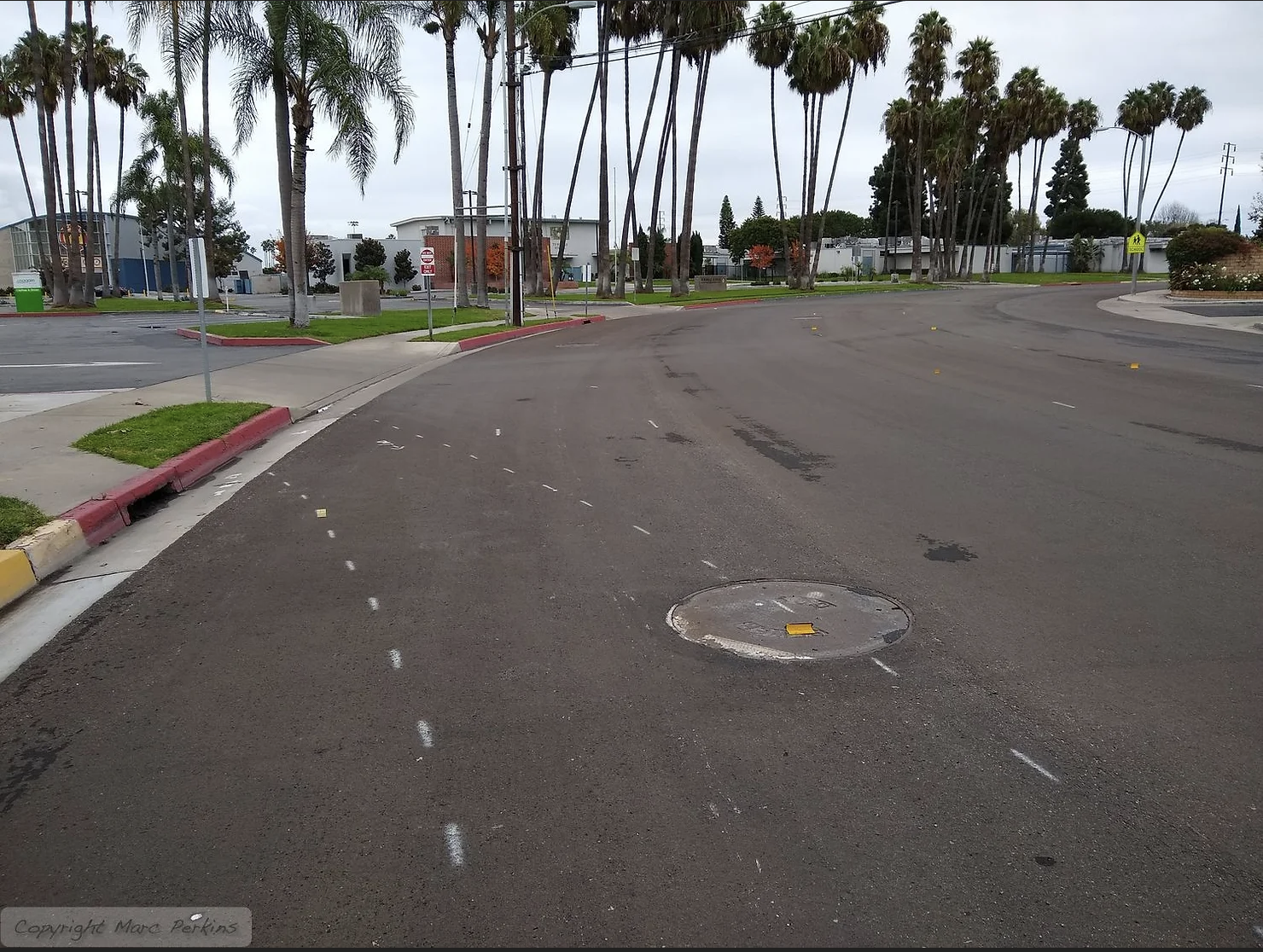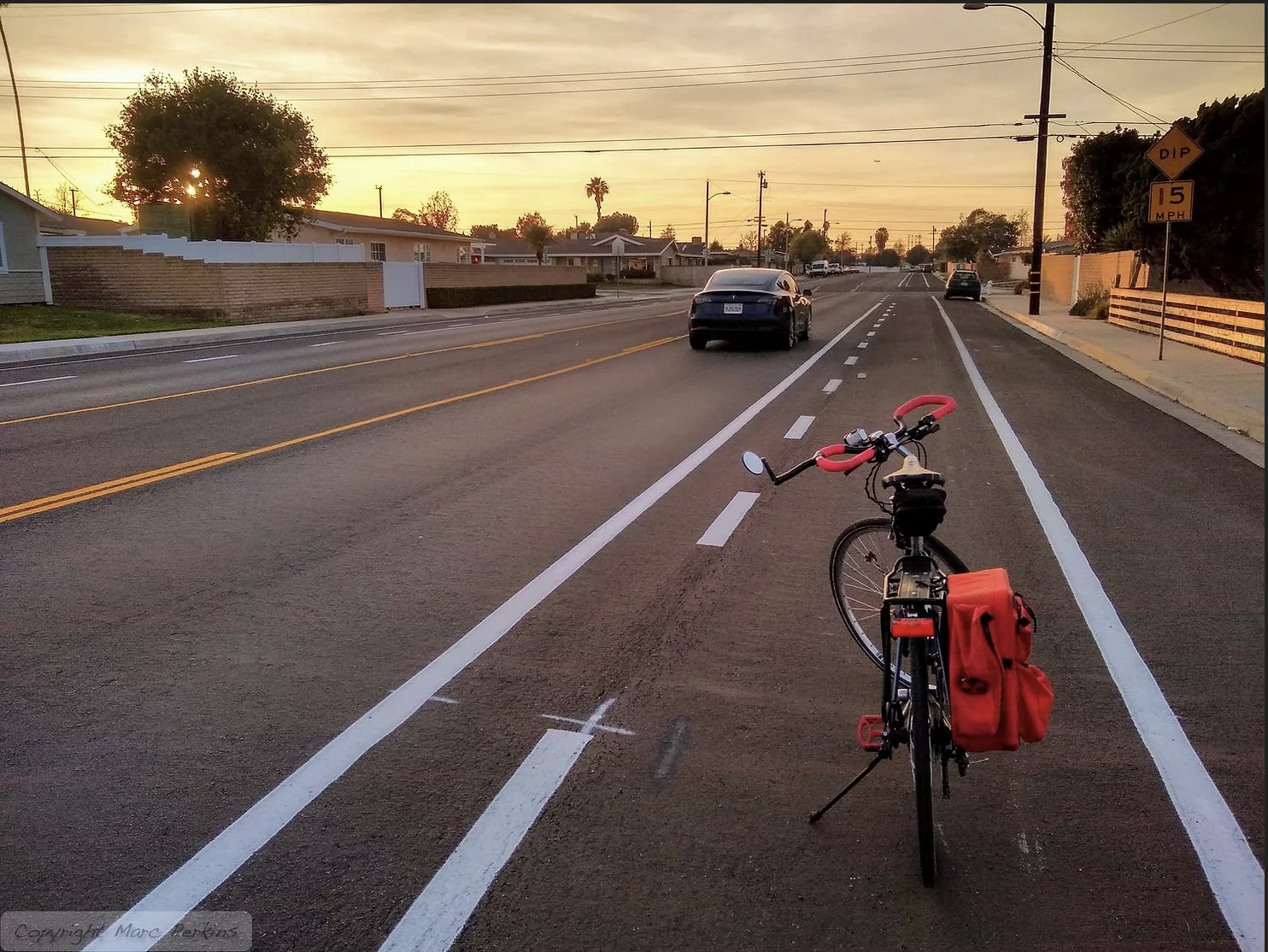California Street bike lane improved to make safer routes to schools and SART
California Street seen in 2017 (left, from Google Maps) and in 2020 (right).
California Street is a 30 MPH residential street in northwestern Costa Mesa that is frequently used by people on bicycles, thanks to its being home to two schools (California Elementary and Tewinkle Middle) and a prime connection to the Santa Ana River Trail (via Moon Park).
California Street before repaving (in 2018).
California Street had several problems: local residents complained about frequent speeding ("it's like the Indy 500 sometimes" one resident said), the 5' wide bike lane was positioned directly in the door zone, and the bike lane disappeared (was routed into a curb) adjacent to the two schools.
California Street as seen in a 2017 Google Maps image.
Late in 2019 the street was repaved. Repaving provides a perfect opportunity for municipalities to reevaluate the layout of the street, as striping a street differently after paving costs functionally nothing (other than the design work involved), while re-striping streets that have not been resurfaced requires grinding off or otherwise covering up the existing striping (a labor-intensive endeavor).
California Street was part of the route for Costa Mesa's holiday cookie delivery ride to all of the city's police and fire stations. Two CMABS board members and the vice-chair of the Bikeway and Walkability committee joined Arlis Reynolds on a test ride of the route the week before the big day. While on this test ride, we saw that the city had marked measurements for striping the street, and were simply going to repeat the existing striping pattern:
Our board members quickly went to work, measuring the street (via Google Earth) and modeling it in StreetMix (a great website for reimagining streets).
The travel lanes on California were 14' wide. As a comparison, the standard lane width for interstate freeway lanes (and the width of the lanes on the 405 in Costa Mesa) is 12'. A typical SUV is less than 7' wide.
NACTO recommends a lane width of 10' for urban streets, reporting that, compared to wider lanes, 10' lanes discourage speeding while allowing more room for other uses, like wider sidewalks, additional landscaping, buffered / wider bike lanes, or even more real estate.
Our board members created a demonstration that showed the street had plenty of room to improve the bike lane without removing motor vehicle lanes, removing parking, or making the motor vehicle lanes unsafely narrow.
This demonstration that it was possible to create a buffered 6' bike lane and make the bike lane continuous adjacent to the schools was e-mailed to the city on a Sunday night. The director of Public Services responded Monday, and by Thursday city staff were out on the streets remarking the lanes.
Here's what the street looked like just a few days ago:
Note: you can see a (painted over) mark indicating where the prior layout's 5' bike lane boundary line would have been.
The motor vehicle lanes on the newly painted street are now 11' wide (NACTO's maximum recommended width), the bike lane is now 6' wide, and there's a 2' buffer between the two (buffers or physical barriers are recommended by NACTO on any street over 25 mph). The extra foot of bike lane width, plus the buffer, allow people on bikes to ride further away from both parked and moving cars; narrowing the motor vehicle lane from 14' to 11' is likely to reduce speeding on the street.
We feel this is an excellent example of the potential benefits of narrowing travel lanes to NACTO standards, and also of the many potential low-cost opportunities for enhancing safety during street repaving. We are exceptionally grateful that city staff responded so quickly and improved California Street.












